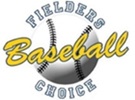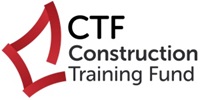Maintaining What You Have
It’s amazing to see the ingenuity displayed by groundskeepers in the U.S. in coming up with ideas to meet the needs of the field on which their teams play. In Europe, it is difficult to find consistent materials to maintain. On the many excursions I have made to European countries, we have always ended up scouring the countryside for a consistent clay mix. Frankfurt (Germany) was the most difficult, in that most material was high in organic matter, which will not allow you to have good footing on the mound or at home plate. At a construction site near the stadium we found a vein of greyish type moulding clay that we chopped up and mixed with the organic soils. This worked for the one exhibition tournament, but I wouldn’t recommend it for a long season.
Even more difficult can be finding correct tools, or constructing them, to perform the maintenance necessary for safe playing surfaces. As discussed in previous articles, the game of baseball is played primarily in the infield. Sixty to seventy percent of that play takes place on the pitching mound and the home plate area. In previous articles we’ve covered the basics of how these areas are constructed. Equally important is maintaining them to retain the consistency so important to the game.
Consistency On The Mound
I have noticed that after repairing pitching mounds, it’s possible to know who the starting pitcher was without actually watching the game itself. In time, groundskeepers learn their team of pitchers and how they work on the mound. I have had major league scouts ask me how consistent the foot placement was for the pitchers who had thrown that particular day. The scouts are looking for consistency in the pitcher’s mechanics, just as I look for consistency in the mound’s playability. Left handers, right handers, hard throwers, sinkball, and junkball pitchers have distinctive styles, and thus create distinctive wear on the mound. After a pitcher has thrown from the mound, the wear areas are somewhat of a “fingerprint” of each pitcher’s throwing style. The landing area especially tells the story about that game’s pitchers. Some pitchers prefer hard mounds, and a few have asked for a pre-dug hole where their foot pushes of from the pitching rubber, or at their landing area. Maintaining the Atlanta Braves and Montreal Expos pitching mounds in spring training over the past several years has allowed me to try many different clay materials, along with different maintenance practices to determine what works the best.
This same type of attention to detail will allow groundskeepers to understand the importance of consistent footing on the most vital part of the field, whether it be for one pitcher or for a series of pitchers. Once they have mastered this level of consistency, the rest of the maintenance will fall into place.
The most important ingredients to the success of a good mound are moisture retention and the ability to keep the clay at a consistent level throughout the game. The mound clay must be pliable and yet hold its form. The same characteristics are needed in the clay material used for mound repairs. If there is no access to soil sample testing to determine the clay, silt, and sand content of the material, try the following:
The Right Material
Mix the material in a small wheelbarrow or bucket and remove all the stones and organic matter that may be present. (You may need to screen the material through a mesh of the desired size.) Moisten the material in the container. Then turn the material with a shovel. While working the material, pick up a handful and compress it in your hands. Try to form a baseball-sized ball. If you can do this without the material crumbling, you may be reaching the right consistency. You should be able to depress the tip of your fingers into the ball without having the ball fall apart. If not successful, try experimenting with small batches of different types of materials until reaching this type of consistency. This prepared material is the repair mix for the holes left on the mound after games. It needs to be somewhat compatible with the existing clay material to bond properly when repairs are made.
Making Repairs
Other tools needed to maintain the mound include a broom for sweeping away loose material, a tamper for the clay, a watering can for applying water, and a “finishing” drag.
Make all mound repairs immediately after the game. First, use the broom to sweep away any loose material from the holes. Then lightly dampen the areas with water. Place a small amount (a handful or two at a time) of the moist repair material into a hole and tamp or compress it. Gradually build up the layer of repair material until it becomes level with the existing contours of the mound. Sweep all the clay that was tracked into the grass back up onto the mound and remove any that is contaminated with organic material. After patching the holes, cover the remainder of the repair clay you recently mixed up in your wheelbarrow so it will be ready to use again.
Now smooth the rest of the mound with a commercially-purchased ballfield “finishing” drag, a cocoa mat or a section of carpet – something that can be pulled by hand. After this is completed, dampen the mound and COVER IT with a piece of plastic or tarpaulin. The mound should remain covered at all times when not in use. This will help in retaining consistent moisture and will keep rain from “washing out” the mound area. Use the same general principle to repair the home plate area.
Mowing Matters
It takes a well-developed cultural program to grow turfgrass in tough conditions. County Stadium of Milwaukee, Wisconsin, was built over an abandoned dump site. If we dig down two-and-one-half to three feet, we’ll find cans and broken bottles. The soil is a heavy clay loam.
Best cultural practices call for mowing turfgrasses to the upper limits of the desirable height range for the specific varieties. Grass generally forms root systems that correspond to the top growth of the plant. It’s what is under the ground that supports and nourishes the above-ground portion of the plant.
But with ballfields we can’t always do that. Our field was resodded in 1995 with 100 percent Kentucky Bluegrass sod. At our players request, we maintain a turf height of 1-1/8-inch, rather than the 1-3/4 to 2-1/2 inches preferred for bluegrasses.
We adjust our cultural practices to help compensate for this added stress. We keep mower blades sharp. A clean cut helps avoid excess stress and prevent pathogen entry points. We core aerate the entire field in the spring and the fall and spot aerate any compacted or worn areas at more frequent intervals. Because of our heavy soils, we also use water injection aeration three times a year, and deep tine aeration to a depth of 10 inches four times a year. We overseed heavy use areas with primed or pre-germinated seed, which softens the hard seed coat so the grass develops faster. We primarily overseed with bluegrass, but do use selected dark green varieties of perennial ryegrasses in certain high wear spots: where the outfielders stand, in the foul areas and where the batting practice outfield screen is placed. We also speed spring green-up with a lightweight turf “blanket” that provides covering to retain moisture and heat, yet still allows adequate air movement to avoid disease development.
The heavier tarps we roll on and off the field during rains are used to shield the from excess moisture, and at other times to retain moisture, so the surface remains playable. We also use the tarps at night to avoid frost damage or, in the fall to extend the growing season. For example, we’ll put the tarp on late in the afternoon when temperatures begin to drop, leave it on overnight, and then take it off the next day as the temperatures rise again.
Our fertilisation program is fine-tuned to suit turf needs based on soil test results. We use extra potassium for greater wear tolerance and additional blade strength. We rotate a granular, micro-nutrient enriched total fertilizer with a liquid organic fertilizer mixed with iron and manganese. The goal is to achieve high nutrient levels without a flush of too tender growth. We keep accurate records of what we do, when we do it, and the results it produces to define the needs of our fields turfgrasses and their tolerance levels.
Patterns – The Finishing Touch
“Patterns” are one more step towards turf perfection. For an overview of what can be accomplished, catch TV coverage or broad field photos of the “art” of sports turf management created at Major League and top university ballparks. Reel mowers are the key to executing the patterns. The combination of the reel cutting method and the roller produces a clean pattern in the turfgrass. The grass blades “bend” in the direction the mower travels. The lighter and darker sections are created by light reflecting off the blades. As spectators face the field, the turf appears light where the mower moved away from them; dark where the mower travelled toward them.
We feel the pattern should have no affect on the players game, and that’s part of doing it well. Ideally, the field itself is in such great shape it ceases to be a factor, allowing the players to concentrate totally on the game.
Patterns may be designed “free hand,” with the mower operator setting a sight line between two spots on the field for the initial pass, then simply following the angle for subsequent passes. More commonly, patterns are first designed on a computer or on paper before trying them on the field. Then the field is divided into quadrants, measured out and a string line run to set up the mowing angle. The string can then be stretched over to the other side to make sure “matching” segments are uniform. We alternate mowing direction at each mowing mowing to avoid any “grain” in the grass that might cause snaking or unusual bouncing of the ball. Changes in patterns and in direction also help turf maintain an upright growing pattern and improve overall turf vigour.
A slow, wide turn at the end of each stripe avoids scuffing and turf wear. “Skinny lines” are formed with one pass of the mower; fat lines with two passes. The mowing of each section is planned so that as the mower moves on to the next section, the turning portion is wiped out with a “clean-up pass.” Generally, one pass with the mower is sufficient, but more passes may be made with the mower blades disengaged to “etch” in patterns for major games.
Because patterns are viewed from every angle by spectators, TV cameras and print photographers, the aesthetics of each pattern are gauged from all angles before a go ahead is given for game use. It takes a special touch to execute the patterns because they must be so precise. Any little deviation will be obvious.
To try the pattern idea without access to a reel mower, make a push “pattern roller” out of PVC pipe filled with cement, and an old mower handle.
Turf is a Key Player in Baseball
In baseball turf plays a key role. It’s true that the majority of the sports turf manager’s time on baseball field is focused on the clay – the pitcher’s mound, the batters box, base areas, and skinned basepaths. That’s as it should be, because so much of the game takes place on these surfaces. But the broad expanse of turf that fills and surrounds that diamond of clay plays an important role in the game. The ball hits the turf and rolls across it. Players stand on, walk over, run through and slide across the turf as the game progresses. The baseball infield sees the most action, with all nine offensive players and the defensive players – pitcher, catcher, basemen, and shortstop – focussing their action there. The outfield handles “only” the three fielders from each team. Safety and playability are the top priorities of all aspects of field care, including the selection, establishment and maintenance of the turf. Ideally, athletes at any level of play should be to concentrate on the game with no concern about the condition of the playing surfaces.
Knowing the Territory
Turf needs a base in which to grow. The baseball field soil profile may consist of native soil, native soil augmented with other materials, or sand-based media augmented with materials. The particle components of these soil profiles will contain varying proportions of sand, silt and clay. Moving back to basics, you’ll remember that those particle sizes vary greatly, too. Sand could be compared to basketballs; silt to baseballs; and clay to marbles. There also are fine, medium and course size variations among the different types of sands. The percentage of each of these various components within the soil profile of your fields affects the basis it provides for growing turf – and supporting play. The smaller silt and clay particles fit together more tightly, leaving fewer pore spaces between particles. The larger sand particles fit together loosely, allowing more pore spaces between particles. Though soil science is much more complex than this, in general terms the lower the percentage of available pore space, the slower the infiltration and percolation rates and the greater the susceptibility to compaction. Turf roots must penetrate the soil profile, spread out within it and become “anchored” in it to support growth. In addition, the roots draw the majority of their moisture and nutrients from the soil. You will need to have, or to develop, a soil profile capable of supporting turf establishment and growth.
Choosing Wisely
But that’s just the beginning. You’ll also need to determine which turf species and varieties within those species are not only capable of growing in that soil profile, but also capable of standing up to the weather conditions and use demands of that field given the constraints of your maintenance program. There are cool season grasses that thrive when temperatures range from moderate to down right cold, and warm season grasses that do their best in hot temperatures and cease active growth when temperatures cool. Grass types fit into these basic cool- and warm-season categories, with each cultivar within a grass type having a specific point at which growth and dormant stages are triggered. Such other influences as the amount of light and moisture, in conjunction with temperatures, affect these key growth elements as well. To retain active growth and keep a solid base of turf during play in some climate zones, it may be necessary to overseed a warm season grass, such as bermudagrass, with a cool season grass such as perennial ryegrass. In other areas, a mix of cool season grasses, such as multiple cultivars of both Kentucky bluegrasses and perennial ryegrasses, may be needed to cope with hot summers and cold springs and falls. Some turfgrass cultivars perform well in heavy, native soils; others perform well in sand, or augmented-sand soils; still others in augmented native soils. You’ll want to base your cultivar choices on the performance reports of these turfgrasses in growing situations and maintenance conditions that most closely match those of your fields.
Keeping Turf In Top Shape
Though general conditions may be similar, there will be “quirks” that affect the interaction of primary characteristics of the field and require compensating adjustments in the maintenance program. Keeping turf in top shape isn’t easy. It takes a unique blend of art and science called sports turf management to pull it off successfully. Turf growth and survival require such key maintenance practices as irrigation, fertilization, mowing and compaction relief – all tailored to the specific needs of the turfgrass cultivars within the specific soil profile under existing weather and field use conditions. The bulk of Baseball field turf usage is concentrated in such high traffic areas as the “path” from home plate to the mound, the borders along the basepaths, the coaches box and those “circles” of activity where the fielders stake their claim. Your maintenance program will need to include special attention to these high use segments of the field. “Best” agronomic practices don’t always fit into the schedule of home games, practices and other on field activities. Sometimes, because of balancing resources of money, materials and crew time with weather conditions and field use demands, long-term turf care principles must give way temporarily to short-term practices to achieve safe, playable conditions for a specific game. Knowing when, why and how to accomplish the best possible solution for both short and long-term field use are major challenges of sports turf management.













